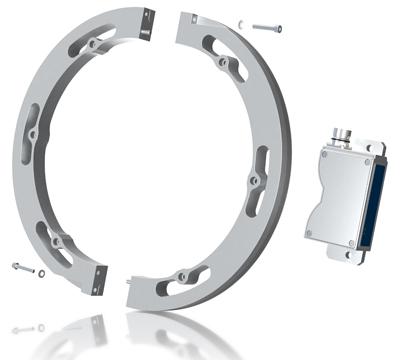
The Leine & Linde MRI 2000 rotary encoder from Heidenhain provides feedback solutions for large rotating machinery. Introduced 2 years ago, this encoder has now received significant performance upgrades.
The MRI ring encoder is segmented into pieces, something that facilitates simple commissioning and service and is of particular benefit on large rotating machinery. As a ring is often mounted on a shaft between other parts in the machinery, it can be difficult to access it, both when first mounting it and when performing service. With a segmented ring, the pieces can be mounted from two sides of the shaft and screwed together. The segments also make handling easier when transporting and storing the ring.
Fixing the ring to the shaft can be made through flange mounting with axial screws or by Leine & Linde's ClampFit solution for simplified commissioning. With ClampFit, the ring segments are screwed together in a way that automatically tightens the ring around the mating shaft. This enables fixing to large cylindrical shaft without any flange surface considerations and without the need for stub shafts.
In this most recent evolution of the product, the ring is now also available with an alternative magnetic structure, enabling relaxed tolerances for the sensor pickup mounting. Radial gap tolerances have been doubled, allowing up to 6mm between the sensing head and the ring surface. In addition, frequency response of the pickup has been doubled as well, providing the opportunity for higher shaft speeds.
Once installed, LED outputs verify power and signal quality giving the operator immediate verification of system health. Options include overvoltage protection and a programmable reference mark to simplify initialization of the motion control system.
The MRI 2000 offers TTL, HTL and RS-422 outputs for standard applications. High Current HTL and the Opto-link fiber-optic outputs are also available which have been specially designed for long distance transmission such as those found in cranes and wind turbines.

